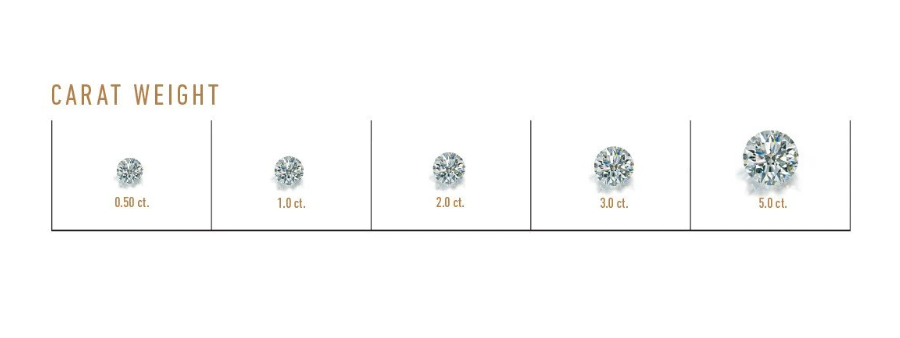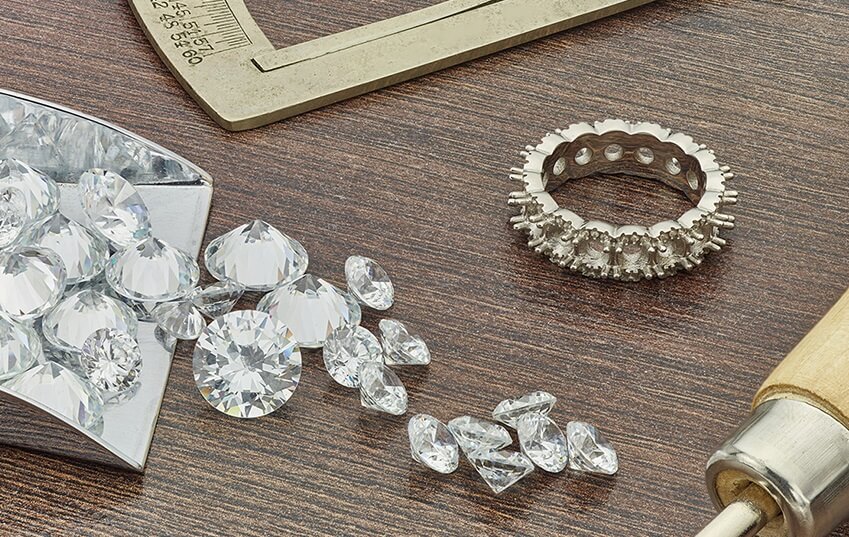GIA | Understanding 4Cs Carat Weight
Carat weight is a fundamental aspect of the 4Cs, the universally recognized criteria for assessing the quality of diamonds. Understanding this dimension of a diamond is crucial for anyone embarking on the journey of selecting the perfect gem. In this article, we delve into the intricacies of carat weight, exploring how it is computed, the methodologies employed by the Gemological Institute of America (GIA), the distinction between carat weight and gemstone size, and why carat weight is of paramount importance in the world of diamonds.
How to Compute Carat Weight
Carat weight is a measure of a diamond’s mass, not its size. One carat is equivalent to 0.2 grams. The carat weight is calculated by weighing the diamond on a precision scale. It’s important to note that the carat weight is only one of the four factors, alongside cut, color, and clarity, that collectively determine a diamond’s overall quality and value.
Computing carat weight is a straightforward process that involves measuring the mass of a diamond. Here’s a step-by-step guide on how carat weight is computed:

- Weigh the Diamond:
- The first step in computing carat weight is to weigh the diamond. This is typically done using a precision scale that is calibrated to measure the weight of gemstones accurately.
- The diamond is weighed in its unset state, before any setting or mounting is applied. This ensures an accurate measurement of the diamond’s mass.
- Use a Precision Scale:
- Jewelers and gemologists use specialized electronic scales designed for measuring the weight of diamonds and other gemstones.
- These precision scales are capable of measuring weight to the nearest hundredth of a carat, providing a highly accurate measurement.
- Calibrate the Scale:
- To ensure accuracy, the scale needs to be calibrated regularly. This involves adjusting the scale to account for any changes or deviations that may affect its precision.
- Calibration is a crucial step in the process to maintain the reliability of the scale’s measurements.
- Measure to the Nearest Hundredth of a Carat:
- Carat weight is expressed in decimals, and the scale used for weighing diamonds typically measures to the nearest hundredth of a carat (e.g., 0.25, 0.50, 0.75 carats).
- The scale will provide a precise numerical value, indicating the carat weight of the diamond.
- Consider the Setting:
- The carat weight is determined before the diamond is set into jewelry. The setting process may involve additional materials, such as metal prongs or a bezel, but these do not contribute to the diamond’s carat weight.
- Record the Carat Weight:
- The final step is to record the computed carat weight. This measurement becomes a crucial factor in assessing the overall quality and value of the diamond.
How Does GIA Measure Diamond Carat Weight
The Gemological Institute of America (GIA), a respected authority in gemstone grading, employs precise methods to measure diamond carat weight. The GIA’s approach ensures accuracy and consistency in determining the mass of diamonds. Here’s how GIA measures diamond carat weight:

- Use of Precision Balances:
- GIA uses highly advanced electronic balances, also known as precision balances or gemological scales, for measuring diamond carat weight.
- These precision balances are calibrated regularly to maintain accuracy in their measurements.
- Controlled Environment:
- The weighing process takes place in a controlled environment to minimize external factors that could affect the accuracy of measurements.
- Temperature, humidity, and other environmental conditions are carefully managed to ensure reliable results.
- Weighing in the Unset State:
- Similar to industry standards, GIA measures the carat weight of diamonds in their unset state. This means the diamond is weighed before any setting or mounting takes place.
- The unset measurement provides an accurate representation of the diamond’s intrinsic mass.
- Measuring to the Third Decimal Place:
- GIA reports carat weight with a high degree of precision, often to the third decimal place (e.g., 0.753 carats).
- This level of detail allows for a more precise understanding of the diamond’s weight, especially crucial for larger diamonds where even a slight difference in carat weight can impact value.
- Use of Gemological Microscopes:
- In some instances, gemological microscopes may be used during the weighing process. This helps ensure that the diamond is properly positioned on the scale, and any potential errors in placement are minimized.
- Incorporation into GIA Grading Reports:
- The carat weight, along with the other 4Cs—cut, color, and clarity—is documented in the GIA grading report for each diamond.
- GIA grading reports are widely recognized in the industry and provide consumers with a detailed and unbiased assessment of a diamond’s characteristics.
- Emphasis on Accuracy and Consistency:
- GIA places a strong emphasis on the accuracy and consistency of its measurements. The use of precise instruments, standardized procedures, and ongoing calibration ensures that the carat weight reported by GIA is reliable.
Carat Weight and Gemstone Size – Two Different Things
While carat weight is a critical factor in determining a diamond’s value, it is distinct from the physical size or dimensions of the gem. Carat weight is a measure of the diamond’s mass, whereas size encompasses the visual appearance when the diamond is viewed from the top (table) – influenced by both carat weight and the cut of the diamond.
Two diamonds with the same carat weight may appear different in size if their proportions and cut differ. Factors such as depth, table size, and girdle thickness play a role in how the diamond presents itself visually. Therefore, it’s essential to consider both carat weight and cut when assessing the overall appearance of a diamond.
Why Is Carat Weight Important?
Carat weight is a key determinant of a diamond’s value and price. Larger diamonds are generally rarer and, therefore, command higher prices per carat. However, it’s crucial to strike a balance between carat weight and the other 4Cs. A larger diamond with inferior cut, color, or clarity may not necessarily be more valuable than a smaller diamond with exceptional qualities in these areas.
Consumers often have specific preferences when it comes to carat weight, and these preferences can vary widely based on individual taste and budget. It’s essential to prioritize personal preferences while considering the interplay of the 4Cs to select a diamond that aligns with both aesthetic preferences and budgetary constraints.
Conclusion
In the realm of diamonds, carat weight is a critical element that contributes to the allure and value of these precious gems. Understanding how carat weight is computed, the meticulous methods employed by institutions like GIA, the distinction between carat weight and gemstone size, and the importance of finding the right balance among the 4Cs empowers consumers to make informed decisions when selecting the perfect diamond for their needs. As you embark on the journey of acquiring a diamond, let the knowledge of carat weight be your guide to unlocking the beauty and brilliance within each exquisite gem.